How Safe is Your Home from Fire
When it comes to fire safety, how confident are you about your home? The truth is, many homeowners underestimate the potential fire hazards lurking within their walls. Fire can spread rapidly, turning a cozy home into a dangerous situation in mere minutes. Understanding fire safety is not just about having a fire extinguisher on hand; it’s about creating a culture of safety that protects your family and property. In this article, we will explore various aspects of fire safety, including prevention measures, detection systems, and emergency preparedness. By the end, you’ll have a comprehensive understanding of how to safeguard your home against fire hazards.
Identifying common fire hazards in the home is crucial. Did you know that faulty wiring is one of the leading causes of residential fires? Additionally, flammable materials such as paper, gasoline, and even certain cleaning supplies can ignite easily if not stored properly. Cooking practices also play a significant role; unattended stoves or ovens can lead to catastrophic outcomes. It’s essential to conduct a thorough assessment of your living space to pinpoint potential risks. Here are some common fire hazards to keep an eye on:
- Faulty wiring: Look for frayed cords and overloaded outlets.
- Flammable materials: Store gasoline and cleaning supplies away from heat sources.
- Cooking practices: Never leave cooking food unattended.
Implementing effective fire prevention strategies can significantly reduce the risk of fire in your home. The first step is to be proactive. Routine maintenance can go a long way in keeping your home safe. Regularly inspect your electrical systems and appliances for any signs of wear and tear. This simple practice can prevent potential fire outbreaks before they even start. But that’s not all; let’s dive deeper into some practical tips for homeowners.
Routine inspections and maintenance of electrical systems and appliances are essential. Think of your home as a car; just like you wouldn’t drive a car without regular oil changes and tune-ups, your home also needs regular checks to ensure everything is functioning properly. Make it a habit to check your outlets, cords, and appliances for any signs of damage. If you notice anything unusual, it’s best to call a professional electrician to assess the situation. This proactive approach can save you from a potential fire disaster.
Smoke detectors are vital for early fire detection. They are your first line of defense against smoke and flames. But how often do you test and replace them? Ideally, you should test your smoke detectors at least once a month and replace the batteries every six months. If the detector is more than ten years old, it’s time to replace the entire unit. Remember, a functioning smoke detector can be the difference between life and death.
Proper storage of flammable materials is key to fire safety. Items like gasoline, cleaning supplies, and propane should be stored in cool, ventilated areas away from heat sources. Use fireproof containers for storage, and always label them clearly. By taking these precautions, you can significantly reduce the risk of accidental fires caused by flammable substances.
Having a well-thought-out emergency plan can save lives. Imagine a scenario where a fire breaks out in your home; do you know what to do? It’s essential to create an effective fire escape plan that includes all family members. Make sure everyone knows the escape routes and where to meet outside. Practice this plan regularly, so it becomes second nature. The more prepared you are, the better equipped you’ll be to handle an emergency.
Investing in fire detection systems is crucial for home safety. Fire alarms come in various types, each serving different purposes. Understanding these differences can help you choose the best option for your home. For instance, ionization alarms are great for detecting fast-flaming fires, while photoelectric alarms are better for smoldering fires. By having a combination of both, you can ensure comprehensive coverage against potential fire threats.
Different types of fire alarms serve various purposes. Here’s a quick breakdown:
| Type | Best For |
|---|---|
| Ionization | Fast-flaming fires |
| Photoelectric | Smoldering fires |
| Dual-sensor | Comprehensive detection |
Regular monitoring and maintenance of fire alarms are necessary for optimal performance. Just like any other device in your home, fire alarms need attention. Schedule routine checks to ensure they are functioning correctly. Replace batteries at least once a year, and don’t forget to clean the units to prevent dust buildup that may hinder their performance.
Having fire extinguishers readily available can be a lifesaver. But do you know which type of extinguisher to have in your home? There are several classes of extinguishers, each designed for specific types of fires, such as those caused by paper, grease, or electrical equipment. Choose the right one, and keep it accessible in case of an emergency.
Selecting the appropriate fire extinguisher for your home is essential. Here’s a quick guide:
- Class A: For ordinary combustibles like wood and paper.
- Class B: For flammable liquids like grease and oil.
- Class C: For electrical fires.
Educating family members on how to use a fire extinguisher can be critical during an emergency. It’s not enough to just have the extinguisher; everyone should know how to use it effectively. Conduct training sessions where you demonstrate the PASS technique: Pull, Aim, Squeeze, and Sweep. This simple training can empower your family to take action when it matters most.
Q: How often should I check my smoke detectors?
A: You should test your smoke detectors at least once a month and replace the batteries every six months.
Q: What should I do if my smoke detector goes off?
A: Evacuate immediately and call the fire department. Do not return to the house until it is deemed safe.
Q: How many fire extinguishers should I have in my home?
A: It’s recommended to have at least one fire extinguisher on each level of your home, particularly in high-risk areas like the kitchen.

Understanding Fire Hazards
When it comes to fire safety, understanding the various fire hazards present in your home is the first step toward prevention. Many homeowners are often unaware of the potential risks that lurk within their living spaces, making it essential to identify and address these hazards proactively. Faulty wiring is one of the leading causes of home fires. Over time, electrical systems can wear down, leading to shorts and sparks that can ignite nearby materials. Therefore, it’s crucial to have a qualified electrician inspect your wiring regularly to ensure it meets safety standards.
Another common fire risk is the presence of flammable materials. Items such as paper, cloth, and certain chemicals can easily catch fire if exposed to heat or flames. For instance, keeping cleaning supplies, gasoline, and other combustibles in a secure and safe area away from heat sources is paramount. It’s not just about storing these items; it’s also about understanding how they interact with each other. For example, mixing certain cleaning agents can create hazardous fumes or increase flammability.
Cooking practices also play a significant role in fire safety. Did you know that unattended cooking is a leading cause of kitchen fires? It’s easy to get distracted while cooking, but it’s vital to stay vigilant. Always keep an eye on what’s on the stove, and never leave the kitchen while frying, grilling, or broiling food. Additionally, wearing loose clothing while cooking can increase the risk of catching fire. It’s a small detail but one that can make a huge difference.
Furthermore, consider the layout and furnishings of your home. Clutter can not only impede escape routes during a fire but can also provide fuel for flames. Items piled up near heat sources or electrical outlets can ignite quickly. It's wise to regularly declutter and ensure that your home is organized, especially in areas where fire hazards are more likely to occur.
To summarize, understanding fire hazards involves a comprehensive approach that includes:
- Regularly checking electrical systems for faults.
- Properly storing flammable materials.
- Practicing safe cooking habits.
- Maintaining an organized living space to reduce clutter.
By taking these steps, you can create a safer environment for you and your family, significantly reducing the risk of fire in your home. Remember, knowledge is power, and being aware of potential hazards is the first line of defense in fire safety.

Fire Prevention Strategies
When it comes to keeping your home safe from fire hazards, prevention is key. You wouldn’t leave your front door wide open while you sleep, so why would you ignore the fire risks lurking inside your home? By implementing effective fire prevention strategies, you can significantly reduce the chances of a fire breaking out. Let’s dive into some practical tips that every homeowner should consider.
First and foremost, regular maintenance checks on your electrical systems and appliances cannot be overstated. Think of your home’s electrical system like the veins in your body; if there’s a blockage or a weakness, it can lead to serious issues. Check for frayed wires, overloaded outlets, and any signs of wear and tear. If you notice anything unusual, it’s best to call in a professional. Remember, it’s always better to be safe than sorry!
Another crucial aspect of fire prevention is the safe storage of flammable materials. Many households have items that can easily ignite, such as gasoline, cleaning supplies, and even certain types of batteries. To keep your home safe, consider these storage tips:
- Store flammable liquids in a cool, dry place away from heat sources.
- Use proper containers that are clearly labeled and designed for flammable materials.
- Keep these items out of reach of children and pets.
Creating an emergency plan is also a vital part of fire prevention. Picture this: a fire breaks out, and chaos ensues. Without a plan, your family might not know what to do or where to go. Sit down with your loved ones and develop a clear fire escape plan. Make sure everyone knows the quickest routes out of the house, and designate a safe meeting spot outside. Don’t forget to practice the plan regularly; it’s just like a fire drill at school, but this time, it’s for your home!
Lastly, consider the importance of smoke detectors. These little devices can be the difference between life and death. Make it a habit to test your smoke detectors monthly and replace the batteries at least once a year. If your smoke detectors are over ten years old, it’s time to replace them entirely. Just like you wouldn’t drive a car with worn-out brakes, you shouldn’t rely on old smoke detectors to keep your family safe.
In conclusion, fire prevention strategies are not just a checklist; they are essential practices that can save lives and protect your home. By routinely checking your electrical systems, safely storing flammable materials, creating an emergency plan, and maintaining your smoke detectors, you can create a safer environment for your loved ones. Remember, a little vigilance goes a long way in fire safety!

Regular Maintenance Checks
This article explores the various aspects of fire safety in homes, including prevention measures, detection systems, and emergency preparedness to ensure your family's safety against fire hazards.
Identifying common fire hazards in the home is crucial. This section discusses potential risks, such as faulty wiring, flammable materials, and cooking practices that can lead to dangerous situations.
Implementing effective fire prevention strategies can significantly reduce the risk of fire. This part covers practical tips for homeowners to minimize fire hazards and maintain a safe living environment.
Routine inspections and maintenance of electrical systems and appliances are essential to ensure your home remains safe from fire hazards. Just as a car needs regular oil changes and check-ups to keep running smoothly, your home requires attention to its electrical systems and appliances. Over time, wear and tear can lead to dangerous situations, such as electrical shorts or overheating, which can ignite fires.
Start by checking the condition of your electrical cords. Look for any frays, cracks, or exposed wires that could pose a risk. If you notice any damage, replace the cord immediately. Additionally, consider the age of your appliances; older models may not comply with current safety standards and could be more prone to malfunction.
It's also wise to schedule professional inspections for your electrical systems at least once a year. Electricians can identify potential issues that you might overlook, such as overloaded circuits or outdated wiring. This proactive approach not only ensures your safety but can also save you from costly repairs down the line.
Furthermore, don't forget about your heating systems. Whether you rely on a furnace, space heater, or fireplace, regular maintenance is crucial. For instance, clean and inspect your chimney annually to prevent creosote buildup, which can lead to chimney fires. Similarly, ensure that your heating elements are functioning efficiently to avoid overheating.
In summary, regular maintenance checks are a vital part of fire safety. By staying vigilant and proactive, you can significantly reduce the risk of fire in your home. Remember, a little attention today can prevent a disaster tomorrow!
Investing in fire detection systems is crucial for home safety. This part discusses various types of fire alarms and their features, helping homeowners choose the best option for their needs.
Different types of fire alarms serve various purposes. This subsection explains the differences between ionization, photoelectric, and dual-sensor alarms, aiding homeowners in making informed decisions.
Regular monitoring and maintenance of fire alarms are necessary for optimal performance. This section emphasizes the importance of routine checks and timely battery replacements to ensure reliability.
Having fire extinguishers readily available can be a lifesaver. This section discusses the types of extinguishers, their uses, and how to properly maintain them for home safety.
Selecting the appropriate fire extinguisher for your home is essential. This subsection covers the different classes of extinguishers and which ones are best suited for common household fires.
Educating family members on how to use a fire extinguisher can be critical during an emergency. This section outlines basic training tips to ensure everyone knows how to respond effectively.
Q1: How often should I check my smoke detectors?
A1: It's recommended to test your smoke detectors monthly and replace the batteries at least once a year.
Q2: What should I do if I find a frayed electrical cord?
A2: Replace the cord immediately to prevent potential fire hazards.
Q3: How can I create a fire escape plan?
A3: Identify all exits, ensure everyone knows the plan, and practice it regularly.
Q4: What type of fire extinguisher should I have in my kitchen?
A4: A Class K extinguisher is ideal for kitchen fires involving cooking oils and fats.
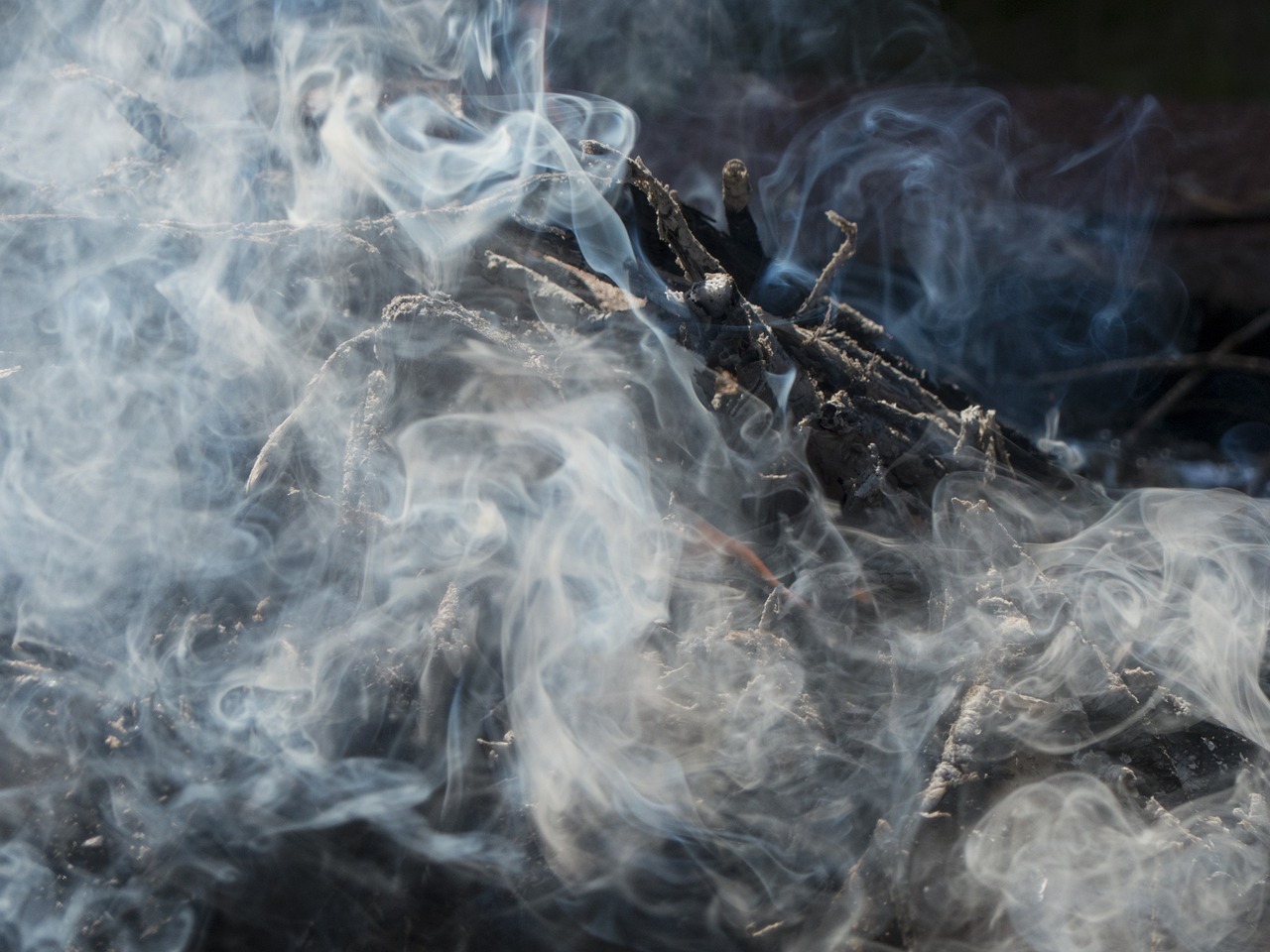
Inspecting Smoke Detectors
When it comes to fire safety, smoke detectors are your first line of defense. These little devices can be the difference between life and death, alerting you to danger before it becomes a full-blown crisis. But just having smoke detectors installed isn't enough; you need to ensure they are functioning properly. So, how often should you check them? It's recommended to test your smoke detectors at least once a month. A simple push of the test button can confirm that the unit is operational and ready to alert you in case of an emergency.
In addition to monthly testing, it's crucial to replace the batteries at least once a year. A good rule of thumb is to change them when you change your clocks for Daylight Saving Time. But don't stop there! Smoke detectors themselves have a lifespan of about 10 years. After this period, they should be replaced entirely to ensure optimal performance. If you're unsure about the age of your smoke detector, look for the manufacturing date on the back of the unit.
Moreover, the placement of your smoke detectors matters just as much as their functionality. Ideally, you should have smoke detectors installed in every bedroom, outside each sleeping area, and on every level of your home, including the basement. If you have a multi-story house, consider placing a smoke detector in the hallway near the stairs. This strategic placement ensures that you have ample warning no matter where a fire might start.
It's also essential to keep smoke detectors clean. Dust and debris can accumulate on the sensors, impairing their ability to detect smoke. A quick vacuum or a gentle wipe with a damp cloth can do wonders to keep your smoke detectors in tip-top shape. If you have a hardwired smoke detector, don’t forget to check the circuit breaker to ensure it’s receiving power.
In summary, regular inspection and maintenance of smoke detectors are vital. By committing to a simple routine of testing, cleaning, and replacing your smoke detectors, you create a safer environment for you and your family. Remember, when it comes to fire safety, an ounce of prevention is worth a pound of cure.
- How often should I test my smoke detectors? It's recommended to test them at least once a month.
- When should I replace the batteries? Change the batteries at least once a year, preferably when you change your clocks for Daylight Saving Time.
- How long do smoke detectors last? Smoke detectors typically last about 10 years; after that, they should be replaced.
- Where should I install smoke detectors? Install them in every bedroom, outside sleeping areas, and on every level of your home.
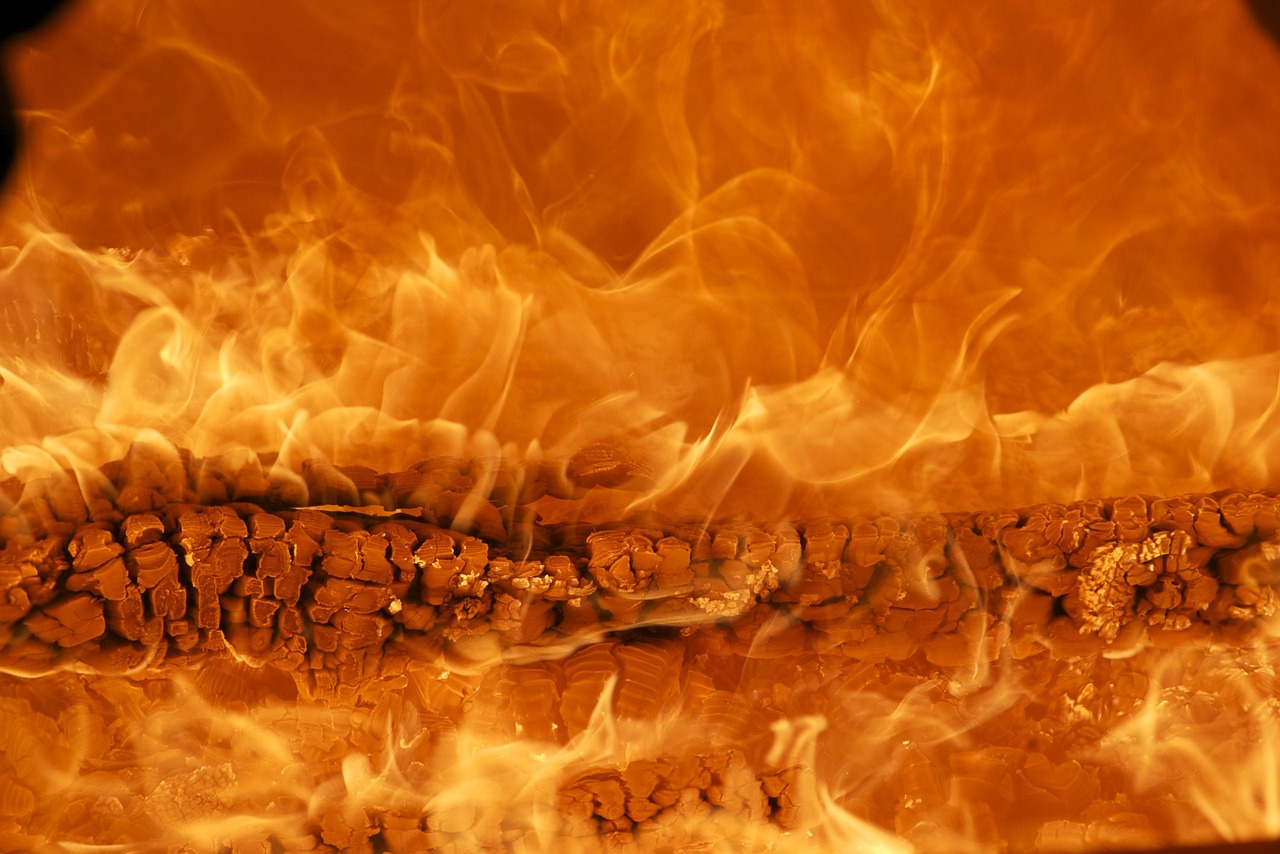
Safe Storage of Flammable Materials
When it comes to fire safety, one of the most critical areas to focus on is the . These items, which can range from household cleaners to gasoline, pose a significant risk if not stored correctly. Imagine your home as a fortress; every item you bring in should be evaluated for its potential dangers. Just like you wouldn’t leave the front gate open for intruders, you shouldn’t leave flammable materials unprotected in your home.
To start, it’s essential to recognize what qualifies as flammable materials. Common household items that fall into this category include:
- Paint thinners and solvents
- Gasoline and other fuels
- Certain cleaning agents
- Propane tanks
Once you’ve identified these items, the next step is to ensure they are stored properly. Here are some key practices to follow:
- Use Approved Containers: Always store flammable liquids in containers that are specifically designed for that purpose. These containers are built to withstand high temperatures and prevent spills.
- Keep Away from Heat Sources: Store flammable materials away from heat sources such as furnaces, water heaters, and stoves. A good rule of thumb is to keep them at least 3 feet away from any heat-producing appliance.
- Ventilated Areas: Ensure that the storage area is well-ventilated. This helps to disperse any vapors that could ignite. Ideally, keep these items in a shed or garage that is not attached to your home.
- Label Everything: Proper labeling is crucial. Make sure every container is clearly marked to indicate its contents. This will help in emergencies and prevent accidental misuse.
Additionally, consider creating a designated storage area that is out of reach of children and pets. A locked cabinet or storage shed can work wonders in keeping these hazardous materials secure. Just like you wouldn’t leave sharp tools lying around, flammable substances should be treated with the same caution.
In summary, the safe storage of flammable materials is not just about following the rules; it’s about protecting your home and loved ones. By taking the time to implement these safety practices, you can significantly reduce the risk of a fire starting in your home. Remember, fire safety is a continuous effort, and being proactive today can save lives tomorrow.
Q1: What should I do if I accidentally spill a flammable liquid?
A1: If you spill a flammable liquid, immediately ventilate the area and use absorbent materials to clean it up. Dispose of the absorbent materials in a safe manner, and avoid using any electrical appliances in the vicinity until it’s cleaned up.
Q2: Can I store flammable materials in my basement?
A2: It's best to avoid storing flammable materials in basements unless they are well-ventilated and away from heat sources. Consider using a detached garage or shed instead.
Q3: How often should I check my storage areas for flammable materials?
A3: Regular checks should be conducted at least every six months to ensure that all materials are stored correctly and that containers are not leaking or damaged.

Creating an Emergency Plan
When it comes to fire safety, having a well-thought-out emergency plan can be the difference between chaos and calm during a crisis. Imagine waking up to the smell of smoke or the sound of a fire alarm blaring. What do you do? Panic can set in, but if you’ve prepared ahead of time, you’ll know exactly how to react. Start by involving every member of your household in the planning process. This ensures that everyone knows their role and can act quickly in case of an emergency.
Begin by mapping out your home. Draw a simple floor plan that includes all rooms, exits, and potential escape routes. Highlight two ways out of every room if possible, especially bedrooms, which can become disorienting during a fire. Remember, windows can be a lifesaver! Ensure that everyone can easily open them and that they are not blocked by furniture or clutter.
Next, establish a designated meeting place outside your home where everyone can gather after escaping. This could be a neighbor's house, a tree across the street, or any safe spot that is a reasonable distance from the flames. The goal is to make sure everyone is accounted for. You might be surprised how often people forget to check in with one another amidst the chaos!
To further enhance your emergency plan, consider conducting regular fire drills. Just like in schools, practicing your escape routes can help reinforce the plan and make it second nature. During these drills, pay attention to any obstacles or challenges that arise. Did someone struggle to remember the route? Was a window stuck? Use these insights to refine your plan.
Lastly, don't forget to discuss the importance of staying low to the ground and covering your mouth with a cloth if smoke is present. Teach your family members how to stop, drop, and roll if their clothes catch fire. Knowledge is power, and being prepared can significantly reduce panic during an emergency.
In summary, creating an effective emergency plan involves:
- Mapping out your home and identifying escape routes.
- Establishing a safe meeting place outside.
- Conducting regular fire drills to practice your escape.
- Teaching safety techniques to all family members.
By taking these steps, you can ensure that your family is ready to respond quickly and safely in the event of a fire. Remember, preparation is key, and it can save lives!
Q: How often should we practice our emergency plan?
A: It's recommended to practice your emergency plan at least twice a year. This keeps everyone familiar with the routes and procedures.
Q: What should we do if we can't escape through our planned routes?
A: If your primary escape routes are blocked, use your secondary routes. If necessary, stay in a room with a window, seal the door with towels or clothing to block smoke, and signal for help.
Q: Should we have a fire safety kit?
A: Yes! Having a fire safety kit that includes items like a flashlight, whistle, and first aid supplies can be very helpful in an emergency situation.
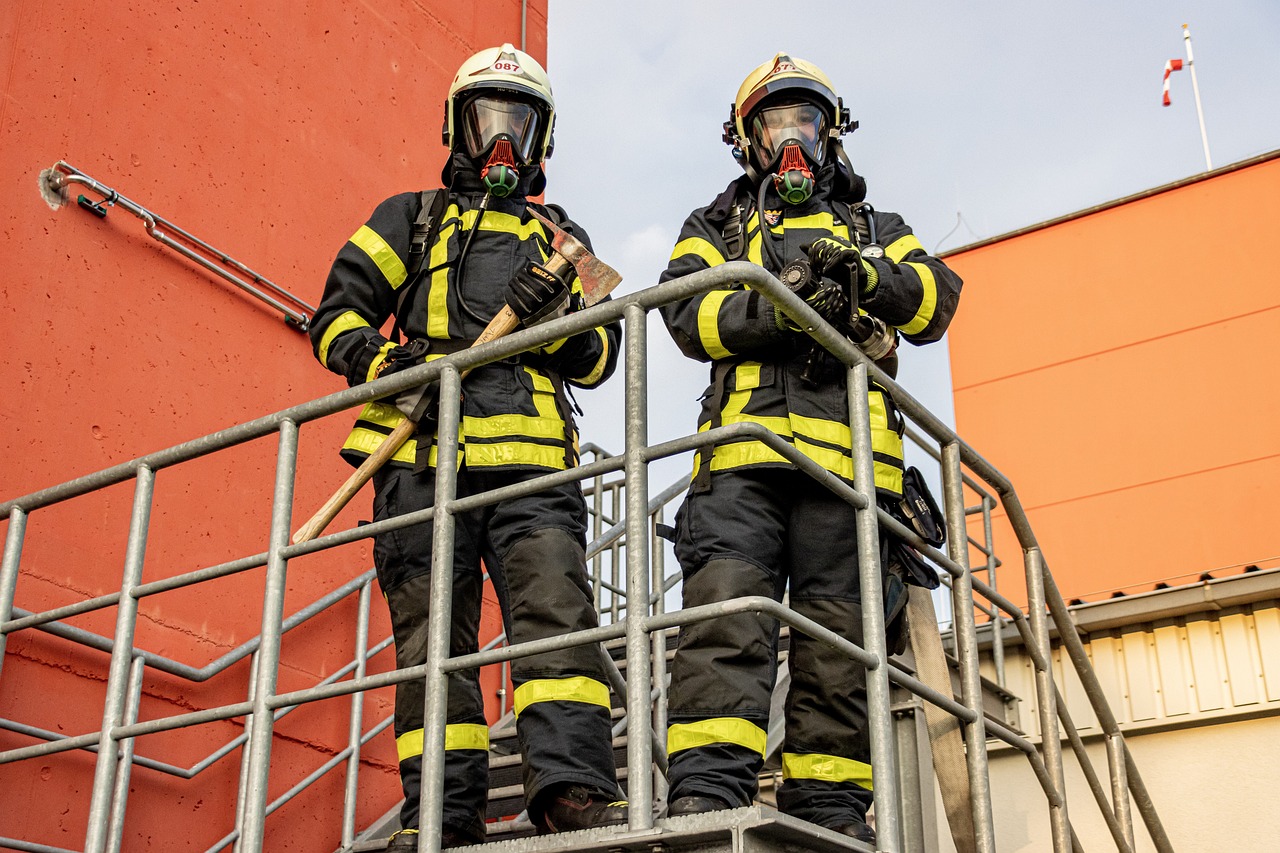
Fire Detection Systems
When it comes to ensuring the safety of your home, investing in is not just a good idea; it's a necessity. These systems are your first line of defense against the devastating effects of fire, providing early warnings that can save lives and property. Imagine waking up in the middle of the night to the sound of a smoke alarm—it's a wake-up call that could mean the difference between life and death. But how do you choose the right system for your home? Let's dive into the various options available and their features.
Fire alarms come in different types, each designed to detect fire in specific ways. The three main types are:
- Ionization Alarms: These are best at detecting fast-flaming fires, such as those caused by paper or flammable liquids. They use a small amount of radioactive material to detect smoke particles.
- Photoelectric Alarms: These alarms excel at detecting smoldering fires, which often produce a lot of smoke before bursting into flames. They work by using a light beam to detect smoke.
- Dual-Sensor Alarms: As the name suggests, these alarms combine both ionization and photoelectric technologies, providing comprehensive coverage against various types of fires.
Choosing the right fire alarm for your home involves considering factors like the layout of your house, the presence of flammable materials, and the age of your family members. For instance, homes with multiple levels may benefit from having both ionization and photoelectric alarms installed in different areas to maximize safety. It's also wise to install alarms in sleeping areas, hallways, and near kitchens, as these are common places for fires to start.
But simply installing fire alarms isn't enough; regular monitoring and maintenance are crucial for optimal performance. Just like you wouldn't drive a car without checking the oil, you shouldn't rely on fire alarms without ensuring they're functioning correctly. This involves routine checks, such as:
- Testing alarms monthly to ensure they emit a sound when activated.
- Replacing batteries at least once a year or whenever the alarm chirps to indicate low battery.
- Replacing the entire unit every 10 years, as older models may not perform as effectively.
In addition to smoke alarms, consider integrating a fire detection system that connects to your smart home technology. These systems can send alerts to your smartphone, allowing you to monitor your home even when you're not there. Imagine being at work and receiving a notification that your smoke alarm has been triggered. This feature can give you peace of mind, knowing that you're always in the loop regarding your home's safety.
In conclusion, fire detection systems are a critical component of home safety. By understanding the different types of alarms, investing in regular maintenance, and considering smart technology, you can significantly enhance your family's protection against fire hazards. Remember, in the world of fire safety, it's better to be proactive than reactive!
Q: How often should I test my smoke alarms?
A: It's recommended to test your smoke alarms at least once a month to ensure they are functioning properly.
Q: How do I know when to replace my smoke alarm?
A: Smoke alarms should be replaced every 10 years. If your alarm starts to chirp or beep intermittently, it may indicate low batteries or the need for replacement.
Q: Can I use a single type of fire alarm throughout my home?
A: While you can use a single type, it's best to have a combination of both ionization and photoelectric alarms to cover all potential fire scenarios effectively.
Q: What should I do if my smoke alarm goes off?
A: If your smoke alarm goes off, evacuate the house immediately, call emergency services, and do not re-enter until it's declared safe.

Types of Fire Alarms
When it comes to protecting your home from fire hazards, understanding the available is essential. Each type serves a unique purpose, and knowing the differences can help you make an informed decision about which system will best suit your needs. The three primary types of fire alarms are ionization alarms, photoelectric alarms, and dual-sensor alarms. Let's dive deeper into each of these categories to understand their functionalities and advantages.
Ionization alarms are particularly sensitive to fast-flaming fires, such as those caused by paper or flammable liquids. They work by using a small amount of radioactive material to ionize the air in a sensing chamber. When smoke enters this chamber, it disrupts the ionization process, triggering the alarm. These alarms are often more affordable and widely available, making them a popular choice for many homeowners.
On the other hand, photoelectric alarms are designed to detect smoldering fires, which produce more smoke before bursting into flames. They utilize a light beam that, when obstructed by smoke particles, activates the alarm. This type of alarm is particularly effective in spaces where cooking might cause false alarms, such as kitchens. Homeowners often prefer photoelectric alarms for their ability to minimize nuisance alarms while still providing reliable protection.
For those seeking the best of both worlds, dual-sensor alarms combine the technologies of both ionization and photoelectric alarms. This integration allows them to effectively detect both fast-flaming and smoldering fires. Investing in dual-sensor alarms can provide comprehensive coverage and peace of mind, ensuring that your home is protected from various fire scenarios. While they may come at a higher price point, the added safety they provide can be invaluable.
To help you understand these types better, here’s a quick comparison:
| Type of Alarm | Best For | Response Time |
|---|---|---|
| Ionization | Fast-flaming fires | Quick |
| Photoelectric | Smoldering fires | Moderate |
| Dual-Sensor | Both types of fires | Quick and Moderate |
When choosing a fire alarm system for your home, consider factors such as the layout of your house, the areas most at risk, and your budget. It’s also essential to regularly check and maintain your fire alarms, regardless of the type you choose. Remember, a fire alarm is only as effective as its maintenance!
Q: How often should I replace my smoke alarms?
A: It's recommended to replace smoke alarms every 10 years, regardless of the type.
Q: Can I use just one type of fire alarm in my home?
A: While you can use just one type, a combination of alarms is often more effective for comprehensive fire detection.
Q: How can I ensure my fire alarms are working properly?
A: Test your smoke alarms monthly and replace batteries at least once a year. Also, ensure that the alarms are clean and free of dust.

Monitoring and Maintenance
When it comes to fire safety in your home, of your fire detection systems are not just recommended; they are absolutely essential. Just like you wouldn't drive a car without checking the oil or tire pressure, you shouldn't rely on fire alarms without ensuring they are in top-notch condition. Regular checks can make the difference between a close call and a disaster. So, what should you be looking for?
First off, testing your smoke alarms is a crucial step. It's generally advised to test them at least once a month. Press the test button on your smoke detector; if it beeps, you're in good shape! If it doesn’t, it’s time for a battery replacement or even a full unit replacement if it’s old. Remember, smoke detectors usually have a lifespan of about 10 years, after which they should be replaced entirely. Keeping track of when you installed your smoke detectors can help you stay on top of this.
In addition to monthly tests, you should also perform a thorough inspection at least twice a year. This inspection should include checking for dust and debris that could interfere with the detector's functionality. A simple wipe with a dry cloth can go a long way in ensuring your smoke detector is clean and operational. If you have a hardwired smoke alarm, make sure the wiring is intact and there are no visible signs of wear and tear.
Now, let’s talk about batteries. Even hardwired smoke detectors typically have a backup battery. Make it a habit to replace this battery at least once a year, preferably when you change your clocks for daylight saving time. This way, you’ll never forget! And let’s not overlook the importance of carbon monoxide detectors. These devices are just as critical for your safety, and they require similar maintenance and testing routines.
To help you keep track of your monitoring and maintenance tasks, consider using a simple checklist. Here’s a quick example:
| Task | Frequency | Status |
|---|---|---|
| Test smoke alarms | Monthly | ✅ |
| Replace batteries | Annually | ✅ |
| Inspect smoke alarms | Every 6 months | ✅ |
| Replace smoke alarms | Every 10 years | ✅ |
By keeping this checklist handy, you can ensure nothing slips through the cracks. Remember, fire safety is not a one-time task; it’s an ongoing commitment. Just like you wouldn’t ignore a leaky faucet, don’t ignore the signs that your fire detection system needs attention. After all, the peace of mind that comes from knowing your home is safe is absolutely priceless.
So, take a moment today to check those smoke detectors, replace those batteries, and ensure your family is protected from the unexpected. Because when it comes to fire safety, it's better to be safe than sorry!
- How often should I test my smoke alarms? - You should test your smoke alarms at least once a month.
- When should I replace my smoke alarms? - Smoke alarms should be replaced every 10 years.
- What type of batteries should I use for my smoke alarms? - Use high-quality alkaline batteries for optimal performance.
- Do I need a carbon monoxide detector? - Yes, especially if you have gas appliances or an attached garage.
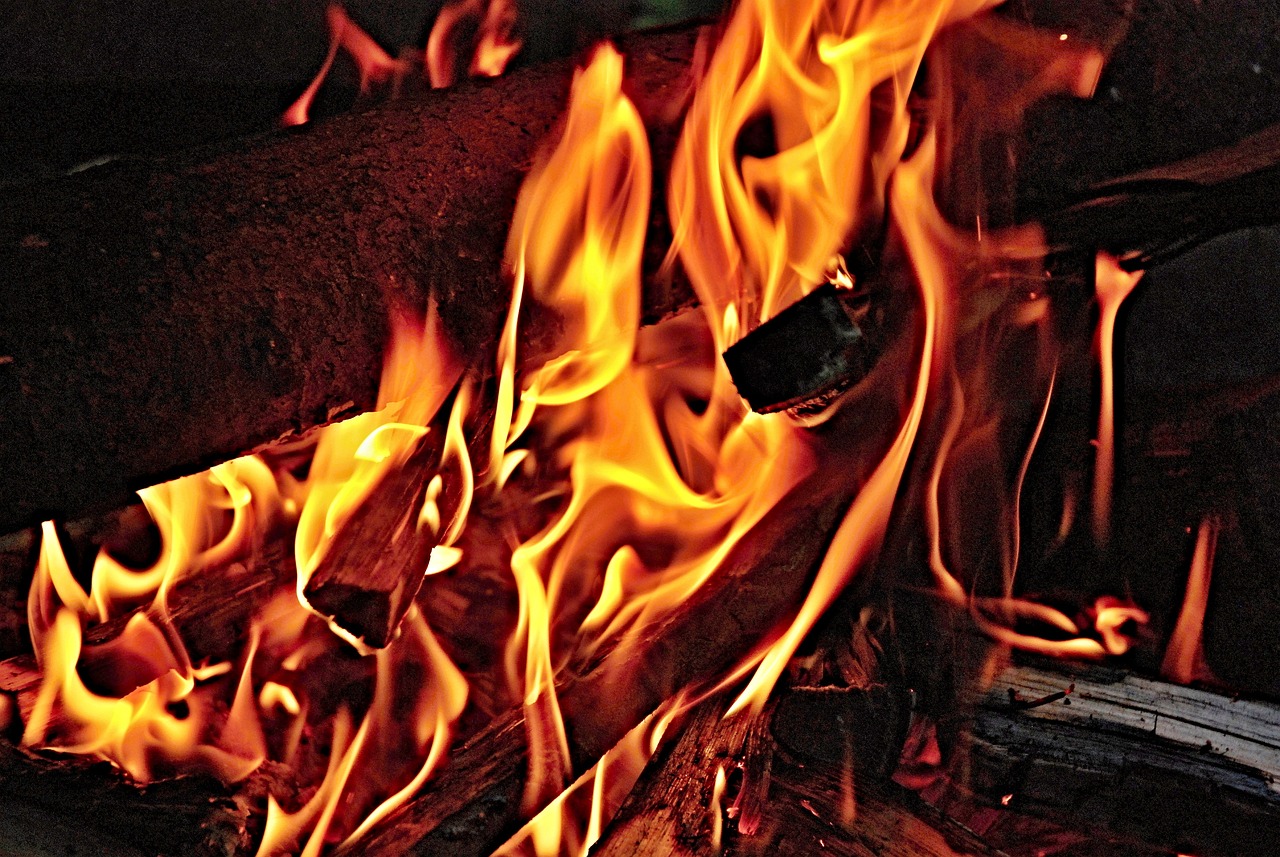
Fire Extinguishers: A Must-Have
When it comes to fire safety, having fire extinguishers readily available in your home can be a true lifesaver. Imagine a small flame erupting in your kitchen while you're preparing dinner; having a fire extinguisher within arm's reach could mean the difference between a minor incident and a catastrophic event. These essential devices are designed to put out small fires before they escalate, making them a critical component of any fire safety plan. But how do you choose the right one? And how do you ensure it’s always ready for action?
First, it's important to understand the different types of fire extinguishers available. Each type is designed to combat specific classes of fires, which can be categorized as follows:
| Class | Type of Fire | Extinguisher Type |
|---|---|---|
| A | Ordinary combustibles (wood, paper, cloth) | Water or Foam |
| B | Flammable liquids (oil, gasoline) | Foam, CO2, or Dry Chemical |
| C | Electrical fires | CO2 or Dry Chemical |
| D | Flammable metals | Dry Powder |
| K | Cooking oils and fats | Wet Chemical |
Choosing the right extinguisher for your home is essential. For instance, a Class A extinguisher is great for general household use, while a Class K extinguisher is specifically designed for kitchen fires involving cooking oils. It’s crucial to assess the potential fire hazards in your home and select extinguishers accordingly.
Once you've chosen the appropriate extinguishers, the next step is proper maintenance. Fire extinguishers require regular checks to ensure they are fully charged and functional. You should:
- Check the pressure gauge monthly to ensure it’s in the green zone.
- Inspect the extinguisher for any signs of damage or corrosion.
- Ensure the nozzle is clear and unobstructed.
In addition, it’s advisable to have your extinguishers professionally inspected at least once a year. This not only guarantees they will work when needed but also extends their lifespan. Remember, a fire extinguisher is only effective if it’s in good working order!
Moreover, educating your family members on how to use a fire extinguisher is just as important as having one. Conducting a simple training session can empower everyone in your household. Teach them the PASS technique, which stands for:
- Pull the pin.
- Aim low at the base of the fire.
- Squeeze the handle.
- Sweep side to side.
By familiarizing your family with this technique, you can ensure that they are prepared to respond effectively in an emergency situation. Remember, panic can set in during a fire, and knowing what to do can make all the difference.
In summary, fire extinguishers are a must-have in every home. They provide a first line of defense against small fires, and with the right knowledge and maintenance, they can be a key factor in protecting your family and property. So, take the time to assess your needs, choose the right extinguishers, and ensure everyone knows how to use them. Your home deserves a fighting chance against fire hazards!
Q: How many fire extinguishers do I need in my home?
A: It’s advisable to have at least one fire extinguisher on every level of your home, especially in high-risk areas like the kitchen and garage.
Q: How often should I replace my fire extinguisher?
A: Fire extinguishers should be replaced every 5 to 15 years, depending on the type. Always check the manufacturer's guidelines.
Q: Can I use water on all types of fires?
A: No, using water on electrical or flammable liquid fires can be extremely dangerous. Always use the appropriate type of extinguisher for the fire class.
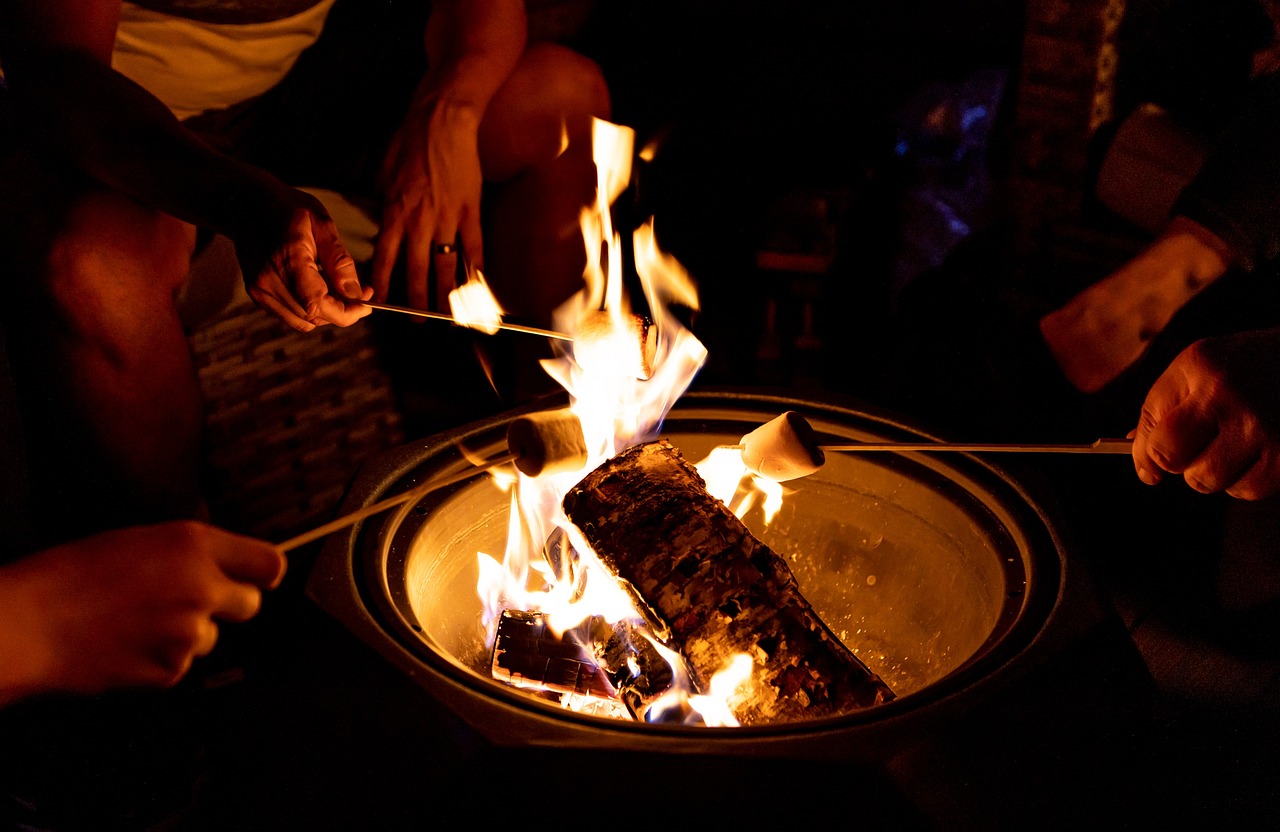
Choosing the Right Extinguisher
When it comes to fire safety, having the right fire extinguisher in your home can make a significant difference in an emergency. But with so many options available, how do you choose the right one? First, it's essential to understand that fire extinguishers are classified based on the type of fire they are designed to combat. Each class corresponds to specific materials that fuel fires, and knowing these classifications can help you make an informed decision.
There are five main classes of fire extinguishers:
- Class A: Designed for ordinary combustibles like wood, paper, and cloth.
- Class B: Effective against flammable liquids such as gasoline, oil, and grease.
- Class C: Suitable for electrical fires involving appliances, wiring, or outlets.
- Class D: Used for combustible metals, typically found in industrial settings.
- Class K: Specifically for kitchen fires involving cooking oils and fats.
In most households, a multi-purpose extinguisher labeled as ABC is highly recommended. This type can handle Class A, B, and C fires, making it versatile enough for common fire hazards found in homes. However, if you frequently cook with oils or have a workshop with combustible materials, you might want to consider adding a Class K or Class D extinguisher to your arsenal.
Next, think about the size of the extinguisher. Fire extinguishers come in various sizes, typically ranging from 2.5 to 20 pounds. A smaller extinguisher might be easier to handle, especially for children or elderly family members, but it may not have enough capacity for larger fires. On the other hand, a larger extinguisher can be cumbersome to maneuver during a crisis. It's crucial to strike a balance between size and effectiveness.
Once you've selected the right type and size, ensure that you place the extinguisher in a location that's easily accessible. The best spots are near potential fire sources, such as the kitchen or garage, but away from the immediate danger of a fire. Also, make sure everyone in your household knows where the extinguisher is located and how to use it. Familiarizing your family with the PASS technique—Pull, Aim, Squeeze, Sweep—can save valuable time in an emergency.
Lastly, regular maintenance is vital. Check the pressure gauge monthly, inspect for any physical damage, and replace or recharge extinguishers as necessary. Most extinguishers have a lifespan of about 5 to 15 years, so always check the expiration date. Keeping your fire extinguishers in top condition ensures that they will be ready when you need them the most.
Q1: How many fire extinguishers do I need in my home?
A: It is generally recommended to have at least one fire extinguisher on each floor of your home, especially in high-risk areas like the kitchen and garage.
Q2: Can I use a fire extinguisher on any type of fire?
A: No, it's crucial to use the right type of extinguisher for the specific fire class. Using the wrong extinguisher can make the situation worse.
Q3: How do I maintain my fire extinguisher?
A: Regularly check the pressure gauge, inspect for any signs of damage, and ensure that it is easily accessible. Replace or recharge it as needed, typically every 5 to 15 years.
Q4: What should I do if my fire extinguisher is empty?
A: If your fire extinguisher is empty, replace it immediately. Do not attempt to refill it yourself unless you are a trained professional.

Training Family Members
When it comes to fire safety, one of the most critical steps you can take is ensuring that all family members are well-trained in using a fire extinguisher. Think of it as preparing for a surprise party—if everyone knows their roles, the event goes smoothly! The same principle applies here; everyone needs to understand how to act swiftly and effectively in case of a fire emergency. First and foremost, gather your family for a training session. Make it a fun yet educational experience. You can even turn it into a mini competition to see who remembers the most about fire safety!
Start by explaining the different types of fire extinguishers. There are several classes, each designed for specific types of fires:
| Class | Type of Fire | Extinguisher Type |
|---|---|---|
| A | Ordinary combustibles (wood, paper, cloth) | Water, foam, or dry chemical |
| B | Flammable liquids (oil, gasoline) | Dry chemical or foam |
| C | Electrical fires | Dry chemical or CO2 |
| D | Combustible metals (magnesium, titanium) | Dry powder |
| K | Kitchen fires (cooking oils and fats) | Wet chemical |
Once everyone understands the types of extinguishers, demonstrate the proper technique for using one. The acronym PASS is a handy way to remember the steps:
- Pull the pin.
- Aim low at the base of the fire.
- Squeeze the handle.
- Sweep from side to side.
After demonstrating, let each family member practice using a fire extinguisher, preferably on a training model. This hands-on experience will boost their confidence and ensure they know exactly what to do in an emergency. It’s essential to address any questions they might have during the training. Encouraging an open dialogue can help clarify any doubts and reinforce the importance of fire safety in your home.
Lastly, consider scheduling regular refresher courses. Just like any skill, practice makes perfect. By revisiting fire safety training, you ensure that everyone remains prepared and confident in their ability to act swiftly should a fire ever occur. Remember, in a fire emergency, every second counts. The more prepared your family is, the safer you will all be.
Q: How often should we practice using a fire extinguisher?
A: It's recommended to practice at least once a year. Regular practice helps keep skills fresh and ensures everyone knows how to respond in an emergency.
Q: What should I do if a fire extinguisher is empty?
A: If a fire extinguisher is empty, it should be replaced immediately. Always check the pressure gauge to ensure it is fully charged.
Q: Are there specific extinguishers I should have in my home?
A: Yes, having at least one multi-purpose extinguisher (Class A-B-C) in your home is advisable. Additionally, consider a kitchen-specific extinguisher (Class K) for cooking-related fires.
Frequently Asked Questions
- What are the most common fire hazards in the home?
Common fire hazards include faulty wiring, overloaded electrical outlets, flammable materials like paper and fabric, and unsafe cooking practices. Regularly inspecting these areas can help you identify and mitigate risks.
- How can I prevent fires in my home?
Implementing fire prevention strategies such as regular maintenance checks, safe storage of flammable materials, and practicing safe cooking can significantly reduce the risk of fire in your home.
- How often should I check my smoke detectors?
It's recommended to test your smoke detectors at least once a month and replace the batteries at least once a year. Additionally, replace the entire unit every 10 years to ensure optimal performance.
- What types of fire alarms are available?
There are several types of fire alarms, including ionization, photoelectric, and dual-sensor alarms. Each type has its own strengths, so it's important to choose one that fits your home’s specific needs.
- Why do I need a fire extinguisher?
A fire extinguisher can be a lifesaver in case of a small fire. It allows you to quickly respond to a fire before it spreads, potentially saving your home and lives.
- How do I choose the right fire extinguisher for my home?
Choosing the right fire extinguisher depends on the types of fires you might encounter. For example, Class A extinguishers are for ordinary combustibles, while Class B extinguishers are for flammable liquids. Assess your needs and select accordingly.
- What should I include in my fire emergency plan?
Your fire emergency plan should include escape routes, meeting points outside the home, and a communication strategy to ensure everyone knows what to do in case of a fire.
- How can I train my family to use a fire extinguisher?
Training your family to use a fire extinguisher involves demonstrating the PASS technique: Pull the pin, Aim low, Squeeze the handle, and Sweep side to side. Practice this regularly to ensure everyone feels confident in an emergency.



















